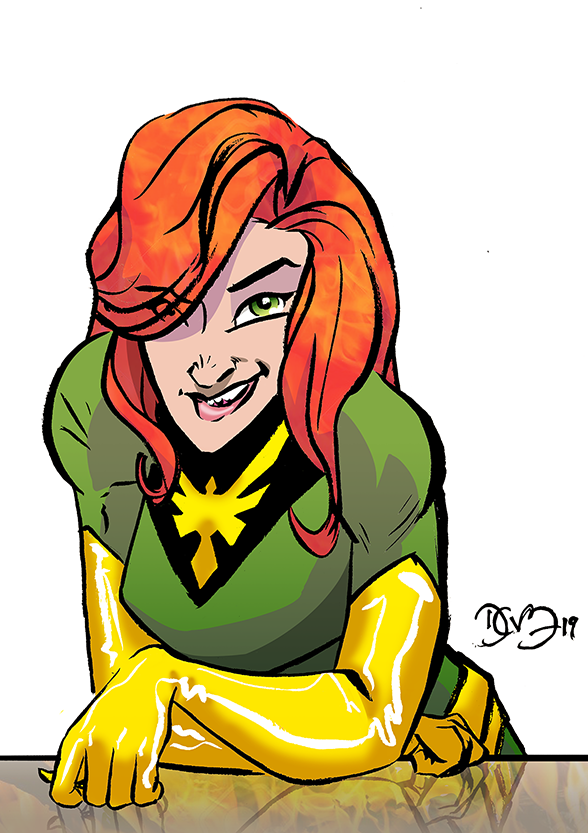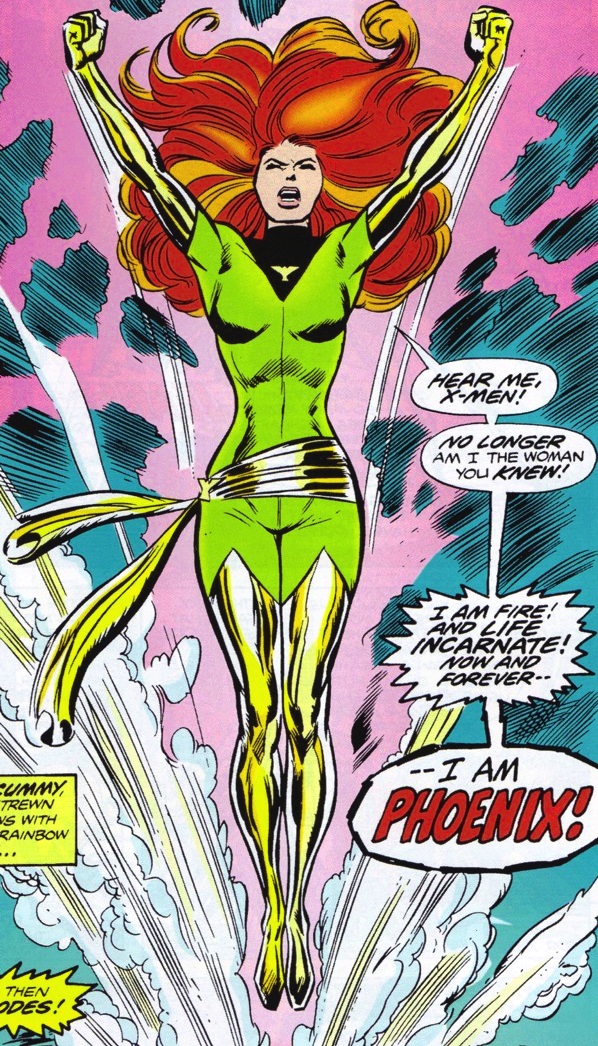Sketch Fridays #54 – Phoenix

In a lot of ways, I’m a bad X-Men fan.
When I entered the world of Marvel’s mutants, action and power poses were the narrative language and, while character drama and interaction were there in the early nineties, I would find that such scenes were much less important from what they once had been.
The character of Jean Grey aka Marvel Girl aka Phoenix aka Dark Phoenix is one of what fans call the O5, meaning the original five characters introduced with X-Men #1 in 1963 by Stan Lee and Jack Kirby. Along with Scott Summers (Cyclops), Warren Worthington III (Angel), Hank McCoy (Beast), and Bobby Drake (Iceman), Jean Grey joined the team in the first issue to become “the girl” among the team of super-powered boys and, during that initial run, assumed the role many female superheroes assumed: the member of the team who got captured, needed saving, feinted from the horror of the events, the one who was sequestered to protect her from the evils of the world.
In the seventies, the book was reinvigorated (and saved from ostensible cancellation) by a writer who cared equally for all of the characters. Though the roster of the X-Men had grown by the time writer Chris Claremont joined, he turned up the soap opera dial and mixed it admirably with the superheroics to turn the floundering book into something the public hadn’t seen before. And it worked.
Jean Grey was one of the first (the first?) major superhero deaths in comics, after being corrupted by a Lovecraftian cosmic entity known as the Phoenix Force which amplified Jean’s nascent superpowers to the level of godlike manipulation of matter, Jean consumed an entire star system, including a world inhabited by a sentient species. Amid the guilt, she sacrificed herself as penance for her crimes and triggered an automated laser cannon that vaporized her, wiping her from existence.
Of course she came back and with her return six years later came retroactive continuity and a bunch of new drama.
By the time I met her in X-Men (volume 2) #1 in 1991, the trend of comics pushed her again to the sidelines and her role was ostensibly that of housebound motherly confidant and girlfriend to the boy scout hero of the team (echoing in some ways the role of Deanna Troi in Star Trek: The Next Generation) which was only confirmed by the popular (but, for me, disappointing) X-Men: The Animated Series.
So, early in my comic reading days, I dismissed her for the more prominent and forward-leaning roles of characters like Rogue or Psylocke. Compared to them, Jean was boring.

But I heard a lot about something called “The Dark Phoenix Saga” and how Jean turned bad and how it was a story built with layers of theme and complexity of characters, Jean most of all. Hearing this, I wrote it off as nostalgia-bound argumentation because it so contrasted with the Jean I knew.
But then––years later––I read “The Dark Phoenix Saga.”
Needless to say, Jean Grey may not still be my favorite character, but of pretty much all the X-characters I always sit up when she enters a story because she still, after almost fifty-six years of existence, brims with narrative possibility, as if waiting to once again show us all how it’s done to be one of the most powerful, interesting, and dynamic characters in a superhero story bar none.
That aside, since she has often been the focal point of high melodrama––and continuing a bit of the artistic themes established by the two Long John-based drawings from the last two weeks––I am motivated by the idea of seeing these characters who lead with their fists and fury to sit around and crack a smile. If anything, I feel like they deserve it, Jean more than any one else.

Discussion ¬